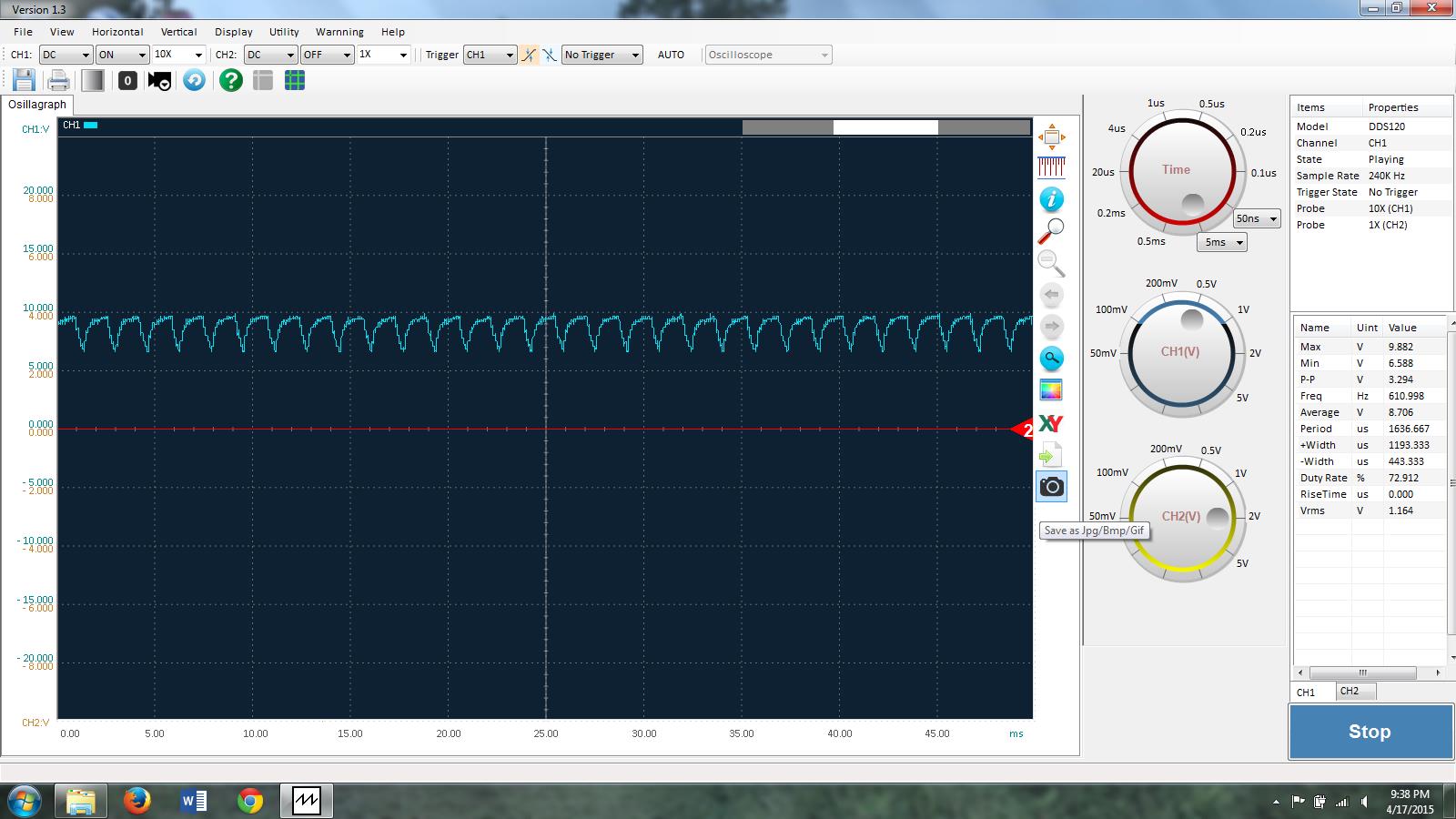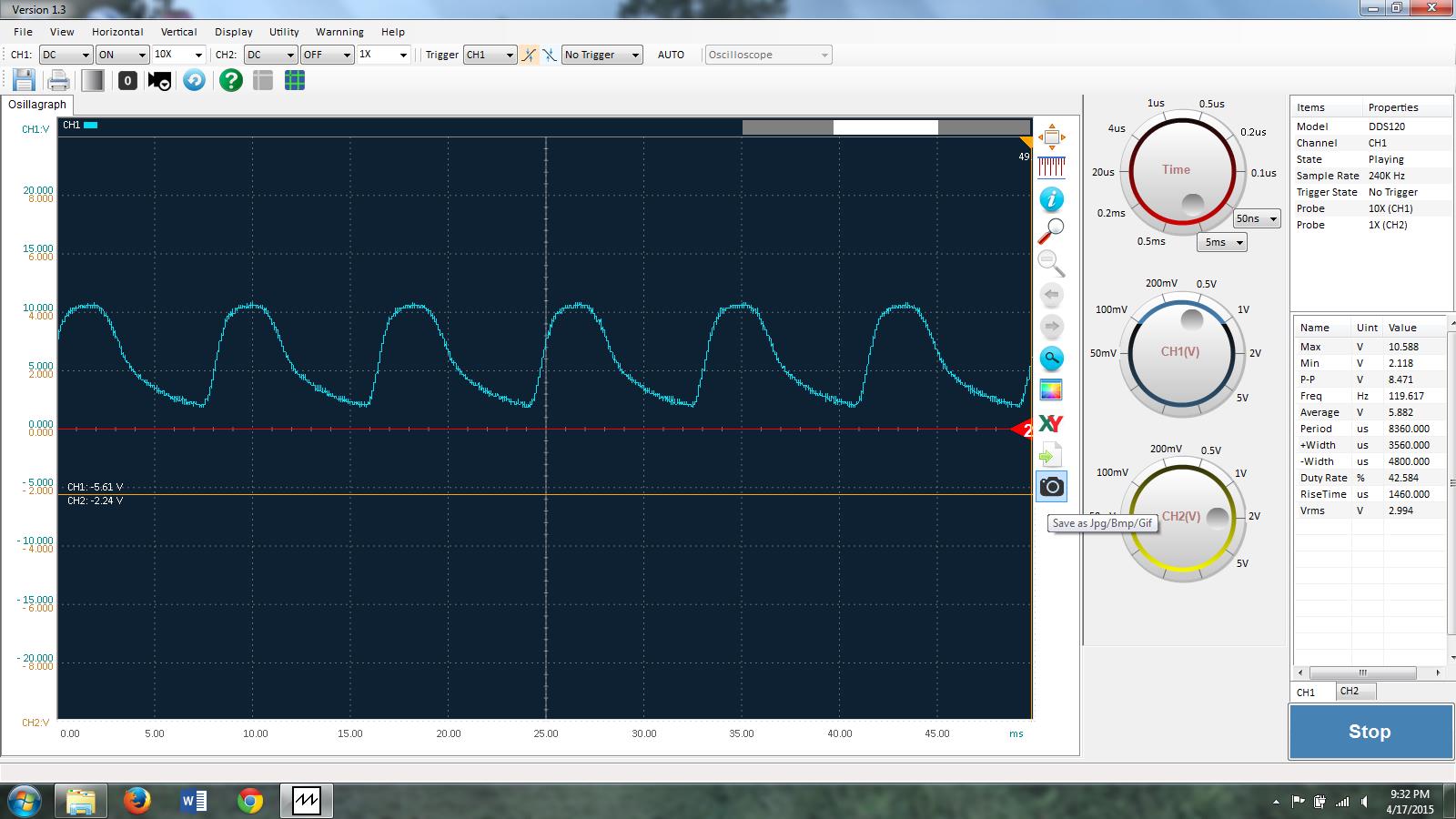Quote:
Originally Posted by glatt

These bulbs flicker a little bit.
|
Quote:
Originally Posted by classicman

AAAAAAAAAAAAAAAAAAAAAArrrrrrrrrrrrrrrgggggggggghhhhhhhhhhh!!!
Shoot me now! /head twitch/
|
Quote:
Originally Posted by xoxoxoBruce

I hardly notice what with the room spinning and me trying to hang on to the floor.
|
I broke down and bought an oscilloscope. Not a real one, but a c
heap PC based one. And I'll be damned if it doesn't do a spectacular job. At least on this.
I hvae a solar panel I've been storing for a rainy day (*snicker*) and I hooked it up to the scope last night.
Measured various light sources and the voltage they generated in the solar panel.
An incandescent bulb is a nice steady light source. This was the refrigerator light, the only old fashioned incandescent bulb I could easily find without dragging my laptop and USB wires and probes and stuff all over the house.
Look how steady that light output is! (You are looking at the blue horizontal flat wave line in comparison to the red zero horizontal line.

And below is the traditional four foot long fluorescent light on our kitchen ceiling. It cycles 120 times a second, but it doesn't lose much of a glow in between each cycle, so it's a pretty smooth light source.

The under cabinet LEDs shown below are connected to a fairly complex power supply and special dimmer that cycles them over 600 times a second, so they don't appear to flicker. And they never dip too low either so they go Bright/Not so bright 600/sec and look fine.

And that brings us to the dining room LED lights shown below. They flicker 120 times per second, just like the kitchen fluorescent, but they turn almost completely off in between each cycle. It's visible.
Just look at these!

I